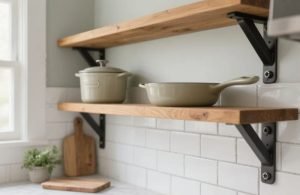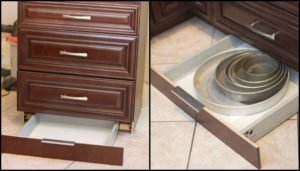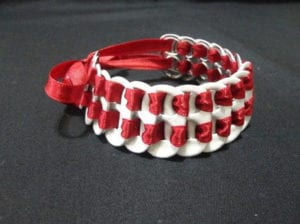Last Updated on November 7, 2025 by teamobn
Contents
At a Glance:
Build a stable, portable shooting bench in one afternoon. Typical build time: 4–6 hours. Typical cost: $75–$150 (materials only). Skill level: Beginner — requires basic cutting, drilling and bolting. This guide includes a full cut list, tools, step-by-step assembly with time estimates, and maintenance tips.
What Are Shooting Benches
A homemade shooting bench can boost your accuracy and comfort in the field. Building one gives you a stable platform tailored to your needs. It lets you choose the materials and design you like. This guide walks you through each step with clear instructions. You’ll have a durable shooting bench ready for your next session.
Shooting benches are heavy-duty tables built for maximum stability. They feature adjustable legs and thick tabletops made to support weight without wobble. This sturdy design handles heavy loads and resists movement under stress. Beyond firearm use, their robust build adapts to many other tasks.
What Are the Materials Needed to Build Shooting Benches?
- Lumber: Eight 2×4 @ 8 ft OR equivalent (see cut list below)
- Top: 1 × 4’×8′ 3/4″ exterior-grade plywood
- Fasteners: 3″ exterior screws (box), 1/2″ × 3″ carriage bolts (8), washers & nuts
- Glue: exterior wood glue
- Finishes: exterior primer + topcoat or clear sealer (2 coats)
- Foot pads: non-slip rubber pads (4)
- Optional: folding leg brackets, quick-release clamps for removable top, carriage bolts for legs
- Tools: circular saw (or miter saw), cordless drill, 5/8″ socket for bolts, speed square, measuring tape, orbital sander, clamps, safety gear (goggles, mask, gloves)
Estimated time: 4–6 hours. Difficulty: Beginner–Intermediate.
Cut List
Use a numbered step list. Cut list (for a 3′ × 4′ top, bench height ~30″):
- Frame rails: 2 × 2×4 at 48″ (side rails) — cut from two 8′ 2×4s
- Cross supports: 3 × 2×4 at 36″ (front, middle, back)
- Legs: 4 × 2×4 at 28″ (for ~30″ final height with pads) — adjust for desired height
- Seat (optional): 1 × 12″ × 24″ board or plywood scrap
- Top: 1 × 3/4″ 4’×3′ plywood (cut from 4×8 to 3×4)
How to Build Shooting Benches?
- Prepare & Measure (15–20 min)
- Clear workspace. Lay out cut pieces. Mark cut lines with a speed square.
- Cut Lumber to Length (20–40 min)
- Cut rails, cross supports and legs per cut list. Sand rough edges lightly.
- Build the Frame (30–40 min)
- Assemble two long side rails (48″ × 2) and three cross supports (36″) into a rectangular frame. Use exterior wood glue at joints and clamp. Pre-drill and drive 3″ exterior screws at each joint (2 screws per joint).
- Attach Legs (20–30 min)
- Bolt four 28″ legs to frame corners using 1/2″ carriage bolts (washers each side). If using folding brackets, install them now and test lock.
- Fit the Top (20–30 min)
- Trim plywood to 3′ × 4′ if needed. Position on frame and clamp. Pre-drill countersunk holes and screw down with 3″ screws or use carriage bolts if removable top desired. If removable, use quick-release clamps and align pre-drilled holes.
- Leveling & Pads (10–15 min)
- Install adjustable foot pads or rubber non-slip pads. Check level on flat ground and adjust feet if needed.
- Sand & Finish (45–90 min + drying)
- Sand 80 → 120 grit, clean dust, apply primer then 2 coats exterior paint or sealer. Let cure per manufacturer (usually 24–48 hrs before heavy use).
- Final Check & Testing (10–15 min)
- Tighten all bolts/screws. Load test with a 200+ lb static weight; fix wobble with shims or tighten bolts.
Total active build time: ~4–6 hours (plus finish dry time).

Cost Breakdown
- 2×4 lumber (8 @ 8′) — $30–$45
- 3/4″ exterior plywood 4×8 (use remainder; cut to 3×4) — $30–$50 (you’ll use part of the sheet)
- Screws/bolts/washers — $10–$25
- Finish (primer + paint or sealer) — $10–$20
- Pads, brackets, extras — $5–$15
Estimated total materials cost: $75–$150, depending on wood type and optional hardware.
Choosing the Right Wood and Materials
Picking quality materials ensures your homemade shooting bench lasts for years. Your choice of wood affects weight, cost, and durability. Balance your needs when selecting lumber, plywood, and hardware.
- Softwood vs. Hardwood
- Softwood species like pine and fir are lightweight and budget-friendly. They cost less but can dent under heavy recoil.
- Hardwood varieties such as oak and maple handle more stress. They resist wear and minimize flex during firing. The trade-off is higher cost and added weight.
- Select the type that matches your budget and shooting style.
- Pressure-Treated Lumber
- Pressure-treated boards resist rot and insect damage. They’re ideal if your bench stays outdoors year-round.
- Chemical treatment penetrates deep into the wood. Let boards dry fully before assembly to avoid warping. Always wear gloves and a mask when cutting treated lumber.
- Plywood Grades
- Exterior-grade plywood uses waterproof glue and durable veneers. It stands up to moisture and sun exposure.
- Look for A-C or B-B grades for smooth surfaces. Avoid interior-grade plywood — it delaminates outdoors. Higher grades cost more but improve longevity and finish quality.
- Hardware and Fasteners
- Use corrosion-resistant screws and carriage bolts. Stainless steel or coated fasteners prevent rust. Match bolt length to frame thickness for a snug fit.
- Washers distribute pressure and reduce wood splitting. Keep extras on hand in case of mistakes.
- Finishes and Paints
- Choose exterior paint or clear sealer with UV protection. Water-based stains dry faster and clean up with soap.
- Oil-based finishes penetrate deeper for moisture resistance. Apply two coats and follow the manufacturer’s drying times. Reapply every one to two years.
Designing for Portability and Storage
A portable shooting bench adapts to different ranges and hides easily. Storage features keep gear organized and protected. Smart design reduces setup time and transport hassle.
- Folding Legs
- Incorporate folding leg brackets for quick collapse. Choose steel brackets rated for outdoor use. Attach them to each leg with pivot bolts. Fold legs under the bench in seconds. Lock brackets in open position for stability.
- Removable Top
- Use quick-release clamps to secure the tabletop. Detach the top from the frame for light transport. Ensure clamp pads won’t mar the wood surface. Store the tabletop flat to prevent warping. Reattach by aligning pre-drilled holes.
- Built-In Handles
- Cut ergonomic handles into the bench sides. Position handles near the center of gravity. Sand edges smooth for comfortable grip. Reinforce handle areas with metal plates if needed. Handles make carrying with one hand easy.
- Collapsible Storage Rack
- Build a rack under the tabletop using slotted supports. Slide in storage bins or ammo boxes. Design the rack to fold flat when not in use. Use adjustable dividers to organize tools and accessories.
- Weight Considerations
- Balance durability with portability by choosing mid-weight wood. Aim for a total weight under 50 pounds. Lighter benches pack easier but may flex. Heavier builds stay rock-solid but require two-person carry.
Customizing for Comfort and Stability
Personal touches improve your shooting experience. Comfort features reduce fatigue during long sessions. Stability tweaks keep your rifle steady and accurate.
- Adjustable Height
- Install telescoping leg extensions for variable bench height. Use locking pins to secure each leg. Adjust height in one-inch increments to match different shooters. Height flexibility accommodates sitting or standing shots.
- Shooting Rest Attachments
- Add a built-in rail or riser for sandbags and rests. Attach a Picatinny rail for quick accessory mounting. Ensure rail height aligns with your cheek weld. Use rubber isolation mounts to reduce vibration transfer.
- Foot Pads and Levelers
- Screw adjustable foot pads into each leg. Level the bench on uneven ground with twist-in leg tips. Choose non-slip rubber pads for firm grip on concrete or dirt. Replace worn pads yearly for consistent performance.
- Ergonomic Seat Options
- Attach a sliding seat platform to the rear cross-support. Use outdoor-rated hardware to resist rust. Cushion the seat with waterproof foam or gel padding. Adjust seat position forward or back for perfect reach.
- Vibration Dampening
- Line contact points with foam or rubber strips. Reduce recoil transfer through the frame. Use neoprene washers under bolt heads. Replace dampening strips when they compress or crack.
Maintenance and Weatherproofing Tips
Regular care keeps your bench in top shape. Weatherproofing prevents rot, rust, and finish failure. Inspect and refresh protective coatings each season.
Sealing and Staining
You’ll want to reapply a quality wood sealer or stain at least once a year to keep your bench looking and performing its best. Start by giving the surface a thorough cleaning with a mild detergent and water.
Let it dry completely, then sand lightly with fine-grit paper to knock down any raised grain or rough spots. Wipe away all dust before you begin.
Use a brush or roller to apply a thin, even coat of exterior stain or clear sealer, following the manufacturer’s coverage and drying-time guidelines. A fresh finish seals hairline cracks, repels moisture, and guards against UV damage for another season.

Rust Protection for Hardware
Protect metal parts by spraying them with a rust-inhibitor or light silicone lubricant every few months. First, wipe each bolt, bracket, and hinge with a clean rag to remove dirt and old residue.
Then apply your chosen protector in a well-ventilated area. Let it penetrate for the time the label recommends, and wipe off any excess to avoid attracting dust.
Inspect hardware for pitting or surface corrosion. If you spot deeper rust or a compromised coating, replace the affected carriage bolts or brackets straight away to maintain your bench’s strength and safety.
Regular Inspections
Carry out a quick inspection before and after each shooting session to catch issues early. Check all screws, bolts, and wing nuts for tightness; you’ll feel if any have loosened under recoil.
Scan the wood around joints for small cracks or splinters. If you find minor damage, fill it with an outdoor-rated wood filler and sand it smooth once it cures.
Look for any signs of plywood delamination or rot on pressure-treated boards. Fixing small problems right away prevents them from growing into big repairs that could compromise your bench’s stability.
Cleaning After Use
After each outing, use a damp cloth or soft brush to remove dust, mud, and residue from all surfaces. Avoid harsh solvents or abrasive cleaners that can strip away your sealant or paint. If you spill oil or grease, blot it up immediately and clean the spot with a mild soap solution.
Rinse with clear water and let the bench air-dry fully before covering or storing. Keep a small bucket of cleaning supplies, cloths, a mild cleaner, and a soft brush handy near your bench so you’re always ready to give it a quick wipe-down.
Storage During Off-Season
When you’re not shooting for an extended period, store your bench in a cool, dry spot out of direct sunlight. If indoor space is tight, cover it with a breathable tarp rather than plastic sheeting to allow airflow and prevent moisture buildup. Place 2×4 blocks under each leg to lift the bench off damp concrete or soil.
This stops water from wicking into the wood over time. Avoid leaning heavy items against the bench to prevent warping or dents. Proper off-season care will keep your shooting bench sturdy and ready for action next season.
Frequently Asked Questions
- How long does the build take?
- Active build time is ~4–6 hours; allow 24–48 hours drying time for finishes.
- How much will this cost?
- Expect $75–$150 depending on wood and optional hardware.
- What skill level is required?
- Basic woodworking skills — measuring, cutting, drilling and bolting. Suitable for beginners with common tools.
- Can I make the bench foldable?
- Yes — add folding leg brackets and reinforcement plates. Use steel brackets rated for load.
- Is it safe for firearms recoil?
- The bench is stable for typical small‑caliber and scoped usage if constructed with sturdy joints, carriage bolts, and a thick plywood top. For high-recoil rifles choose heavier hardwood or add mass (sandbags, steel plates).
Conclusion
Building this homemade shooting bench shows how DIY can enhance your range time. It’s a sturdy platform that boosts accuracy and comfort. You picked materials and features to match your preferred usage. Proper maintenance keeps it in top condition.
For a larger and functional table, check out our DIY guide for a picnic table!






